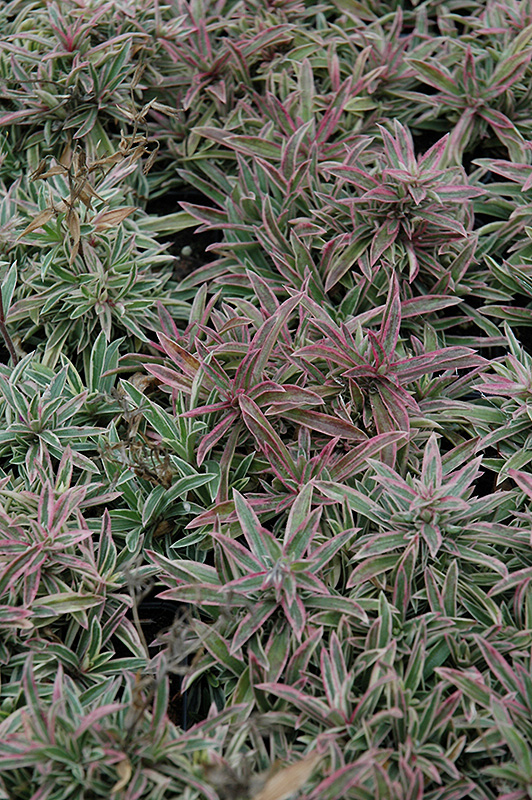Variegated Creeping Phlox
Phlox x procumbens 'Variegata'
Height: 4 inches
Spacing: 8 inches
Sunlight:
![]()
![]()
Hardiness Zone: 3a
Ornamental Features
Variegated Creeping Phlox has masses of beautiful lightly-scented violet star-shaped flowers at the ends of the stems from early to late spring, which are most effective when planted in groupings. Its attractive tiny narrow leaves are green in color with showy white variegation. As an added bonus, the foliage turns a gorgeous pink in the fall.
Landscape Attributes
Variegated Creeping Phlox is a dense herbaceous perennial with a mounded form. Its relatively fine texture sets it apart from other garden plants with less refined foliage.
This is a relatively low maintenance plant, and should not require much pruning, except when necessary, such as to remove dieback. Deer don't particularly care for this plant and will usually leave it alone in favor of tastier treats. It has no significant negative characteristics.
Variegated Creeping Phlox is recommended for the following landscape applications;
- Mass Planting
- Rock/Alpine Gardens
- Border Edging
- General Garden Use
- Naturalizing And Woodland Gardens
Planting & Growing
Variegated Creeping Phlox will grow to be only 4 inches tall at maturity, with a spread of 10 inches. When grown in masses or used as a bedding plant, individual plants should be spaced approximately 8 inches apart. Its foliage tends to remain low and dense right to the ground. It grows at a slow rate, and under ideal conditions can be expected to live for approximately 10 years. As an herbaceous perennial, this plant will usually die back to the crown each winter, and will regrow from the base each spring. Be careful not to disturb the crown in late winter when it may not be readily seen!
This plant does best in partial shade to shade. It does best in average to evenly moist conditions, but will not tolerate standing water. It is not particular as to soil type or pH. It is quite intolerant of urban pollution, therefore inner city or urban streetside plantings are best avoided, and will benefit from being planted in a relatively sheltered location. Consider applying a thick mulch around the root zone over the growing season to conserve soil moisture. This particular variety is an interspecific hybrid. It can be propagated by division; however, as a cultivated variety, be aware that it may be subject to certain restrictions or prohibitions on propagation.


